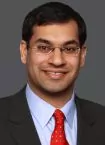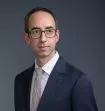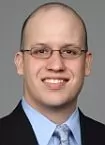One of the most hotly-contested issues in litigation under the Telephone Consumer Protection Act (TCPA) is what equipment counts as an "automatic telephone dialing system" (ATDS) triggering the TCPA's restrictions. In 2018, the D.C. Circuit threw out the FCC's interpretation of the statutory definition of an ATDS-which was so broad as to encompass smartphones-as arbitrary and capricious. (See our report on the D.C. Circuit's ACA International v. FCC decision.) In the wake of that decision-while parties await the FCC's new rule-courts around the country have been weighing in how best to interpret the statutory text.
The issue is now the subject of a deep circuit split. In recent months, both the Seventh Circuit in Gadelhak v. AT&T Services, Inc. and the Eleventh Circuit in Glasser v. Hilton Grand Vacations Co. (pdf) have concluded that equipment that dials from a pre-selected list of phone numbers does not qualify as an ATDS. (Disclosure: Mayer Brown represented AT&T in Gadelhak; Archis was on the briefs in the Seventh Circuit.) The Seventh and Eleventh Circuits thus rejected the Ninth Circuit's more expansive interpretation of ATDS in Marks v. Crunch San Diego, LLC. (See our report on Marks.) The Second Circuit, in contrast, recently followed the Marks interpretation in Duran v. La Boom Disco.
In light of this growing divide, lawyers on both sides of the "v." are waiting for the Supreme Court to step in.
The statutory definition of an ATDS
The issue in Gadelhak, Glasser, Duran, and Marks-whether equipment that dials from a pre-set list of numbers rather than random or sequential ones an ATDS-turns on a question of statutory interpretation. The TCPA defines an "automatic telephone dialing system" as "equipment which has the capacity-(A) to store or produce telephone numbers to be called, using a random or sequential number generator; and (B) to dial such numbers." 47 U.S.C. § 227(a)(1). But does the phrase "using a random or sequential number generator" modify both preceding verbs ("to store" and "[to] produce") or only the second one ("[to] produce")?
Taken in isolation, the statutory text is not a model of clarity. Indeed, Judge Barrett, writing for a unanimous Seventh Circuit panel in Gadelhak, pointed out that the "wording of the provision . . . is enough to make a grammarian throw down her pen."
In Marks, the Ninth Circuit had declared the statutory language "ambiguous," then decided to interpret it to cover equipment dialing from set lists of numbers-i.e., by concluding that "using a random or sequential number generator" applies only to "produce"-for two reasons. First, the FCC had adopted that view in expanding the TCPA to cover predictive dialers, and Congress had not abrogated the FCC's orders. And second, the Ninth Circuit believed that the TCPA's exception for calls made with the "prior express consent" would be superfluous if an ATDS were defined to cover only calls placed through use of a random or sequential number generator. But the consequence of the interpretation advanced in Marks (in our view) is that virtually any smartphone qualifies as an autodialer-making most calls to cell phones illegal, as smartphone users typically don't have prior express consent to call or text all of their friends, family members, acquaintances, or colleagues. That fact would make each of the tens of millions of smartphone owners in the United States a "TCPA-violator-in-waiting"-the same concern that led the D.C. Circuit in ACA International to invalidate the FCC's interpretation of the term ATDS.
In Gadelhak and Glasser, the Seventh and Eleventh Circuit explained why the Marks reading of the TCPA was wrong:
- Grammatically, the placement of the modifier ("using a random or sequential number generator") after two verbs sharing a direct object ("to store or produce telephone numbers") signals that the modifier applies to both verbs. And the use of commas to separate the modifier reinforces that signal. By contrast, assuming that the modifier applies only to "produce," such that any equipment that can "store" a telephone number however it is generated is an ATDS, would, as the Seventh Circuit put it, "require . . . contort[ing] the statutory text almost beyond recognition."
- Historically, when the TCPA was enacted in 1991, the existing equipment that Congress sought to regulate used random or sequential number generators to make a list for either immediate or later dialing. And for over a decade, the consensus was that devices that merely stored numbers for later dialing-but did not use a random or sequential number generator-was not covered.
- Although the FCC changed course and purported to interpret the TCPA to cover predictive dialers in 2003, the D.C. Circuit's decision in ACA International vacated that interpretation, thus wiping the slate clean-and making Marks's deference to the FCC's interpretation erroneous.
- The sheer breadth of coverage of Marks's interpretation of ATDS, which would cover every call or text sent by a smartphone, could not have been intended by Congress. Indeed, the overriding focus of the TCPA is the regulation of telemarketers using particular technologies-not everyday Americans. Moreover, as the Glasser court pointed out, the Marks rule fails to account for a serious constitutional problem: "Would the First Amendment really allow Congress to punish every unsolicited call to a cell phone?"
- Finally, interpreting ATDS more narrowly to require random or sequential number generation, as the statute was originally understood, in fact would not render any other part of the TCPA surplusage. The Marks court had worried that the exceptions for solicited calls or calls to collect government debts would be unnecessary, as those calls are not made to random or sequential numbers. But as the Eleventh Circuit pointed out, those exceptions still would be needed because the TCPA proscribes not only the use of an ATDS, but also the use of an "artificial or prerecorded voice." These exceptions were needed to allow the use of artificial or prerecorded voices in the permitted categories of calls. Moreover, "it is possible to imagine a device that both has the capacity to generate numbers randomly or sequentially and can be programmed to avoid dialing certain numbers," such as ones of subscribers who haven't consented to be called. For that equipment, the exceptions would still be needed.
In sum, the Seventh and Eleventh Circuits both held that the TCPA can only be read as having the modifier "using a random or sequential number generator" apply to both verbs ("to store or produce").
The Second Circuit, by contrast, followed Marks. The Second Circuit relied on the same rationales advanced by the Ninth Circuit, as well as the exception for debt-collection calls by the government, and the panel was not persuaded by the above explanations offered by the Seventh and Eleventh Circuits. The linchpin of the Second Circuit's analysis was its conviction that the word "store" in the statutory definition of an ATDS would be surplusage unless it was not modified by the phrase "using a random or sequential number generator." In other words, the Second Circuit concluded that there are two ways a device could be an ATDS: (1) if the device produces numbers with a random or sequential number generator; or (2) "if it can 'store' numbers, even if those numbers are generated elsewhere, including by a non-random or non-sequential number generator-such as a person." The Second Circuit also found persuasive the FCC's prior orders regarding predictive dialers and deemed them still valid, notwithstanding the D.C. Circuit's decision in ACA International.
Human intervention
The Eleventh Circuit also noted another problem with the lawsuit challenging unsolicited calls to the plaintiffs' cell phone numbers-in every instance, the telephone equipment "required human intervention" to place a call. That is, the system would put the telephone number on the screen, but the employee must press a button to place the call. As the court observed, "[t]his reality cannot be squared with the accepted assumption that auto-dialers must automatically dial the numbers."
The court noted that some "human tasks" might be so "immaterial" as to compel the conclusion that the calls are still being placed automatically. For example, just "turning on the machine or initiating its functions" might be insufficient to prevent equipment from being deemed an ATDS. But when an "employee's choice initiates every call," the equipment used is not an ATDS even if "the system dials the numbers itself." As the court noted, "no one would think that telling a smartphone to dial the phone number of a stored contact . . . means the smartphone has automatically dialed the number."
The Second Circuit, on the other hand, held that the systems used in that case did not involve too much human intervention to preclude qualifying as an ATDS. The court recognized that unlike predictive dialers, which automate the timing of when a call is placed, the programs required a human to initiate the text messages at issue. But the court did not deem that distinction dispositive, instead concluding that the act of initiating a series of text messages "is not the same thing as dialing" each number on the list. The Second Circuit sought to respond to a potential criticism that its approach to the question of human intervention could reach what it described as "so-called smartphones," but suggested that the concern was misplaced because "[c]licking on a name in a digital phonebook to initiate a call or text is a form of speed-dialing or constructive dialing that is the functional equivalent of dialing by inputting numbers." Notably, however, the court did not confront the issue of group texting-something that all smartphones are capable of-in which a user can select large numbers of phone numbers to receive the an identical text at once. The D.C. Circuit relied on that exact example in ACA International in concluding that the FCC's interpretation of the statutory definition of an ATDS as including ordinary smartphones results in "anomalous outcomes," and thus confirms that the FCC's interpretation was "unreasonable, and impermissible[.]"
The bottom line
Gadelhak and Glasser are welcome news to potential TCPA defendants outside the Ninth Circuit. Gadelhak and Glasser reflect a trend rejecting the Ninth Circuit's expansive approach to the definition of an ATDS. For example, the Third Circuit also has held that only equipment that has the "present capacity to function as an autodialer by generating random or sequential numbers and dialing those numbers" constitutes an ATDS. Dominguez on Behalf of Himself v. Yahoo, Inc. (pdf). And as noted above, in ACA International, the D.C. Circuit vacated the FCC orders interpreting ATDS to cover predictive dialers as "arbitrary and capricious." But the Second Circuit's decision in Duran is a step in the wrong direction, and underscores that courts will remain divided on this issue until the Supreme Court grants review to resolve the circuit split.
In the meantime, the FCC is considering anew how to define an ATDS, and is expected to issue a declaratory ruling and order setting forth its position. Readers of the blog should stay tuned for further developments.
Finally, we also note briefly another issue discussed in Gadelhak-whether a recipient of text messages has Article III standing to sue under the TCPA. The Seventh Circuit concluded that intrusion of unwanted text messages is sufficient to constitute a concrete "injury in fact," given what the court saw as the "common law roots" of the harm. In doing so, the court expressly agreed with the Second Circuit in Melito v. Experian Marketing Solutions, Inc. and the Ninth Circuit in Van Patten v. Vertical Fitness Group, LLC. By contrast, in Salcedo v. Hanna, the Eleventh Circuit held that receipt of a single unwanted text message is insufficient. We'll also continue to cover this emerging circuit split.
Originally published by Mayer Brown, May 2020
Visit us at mayerbrown.com
Mayer Brown is a global legal services provider comprising legal practices that are separate entities (the "Mayer Brown Practices"). The Mayer Brown Practices are: Mayer Brown LLP and Mayer Brown Europe – Brussels LLP, both limited liability partnerships established in Illinois USA; Mayer Brown International LLP, a limited liability partnership incorporated in England and Wales (authorized and regulated by the Solicitors Regulation Authority and registered in England and Wales number OC 303359); Mayer Brown, a SELAS established in France; Mayer Brown JSM, a Hong Kong partnership and its associated entities in Asia; and Tauil & Chequer Advogados, a Brazilian law partnership with which Mayer Brown is associated. "Mayer Brown" and the Mayer Brown logo are the trademarks of the Mayer Brown Practices in their respective jurisdictions.
© Copyright 2020. The Mayer Brown Practices. All rights reserved.
This Mayer Brown article provides information and comments on legal issues and developments of interest. The foregoing is not a comprehensive treatment of the subject matter covered and is not intended to provide legal advice. Readers should seek specific legal advice before taking any action with respect to the matters discussed herein.



